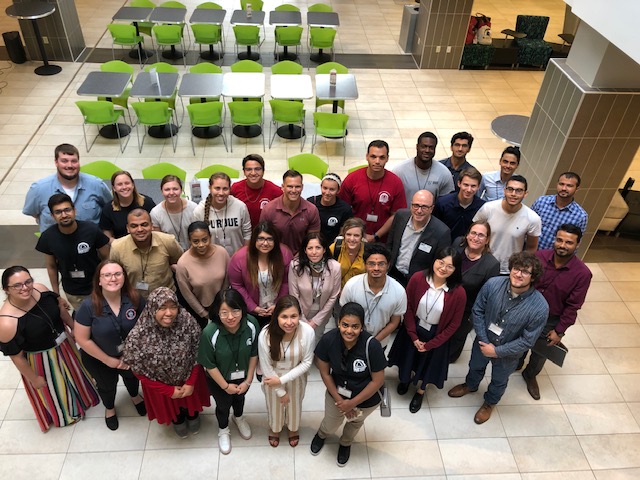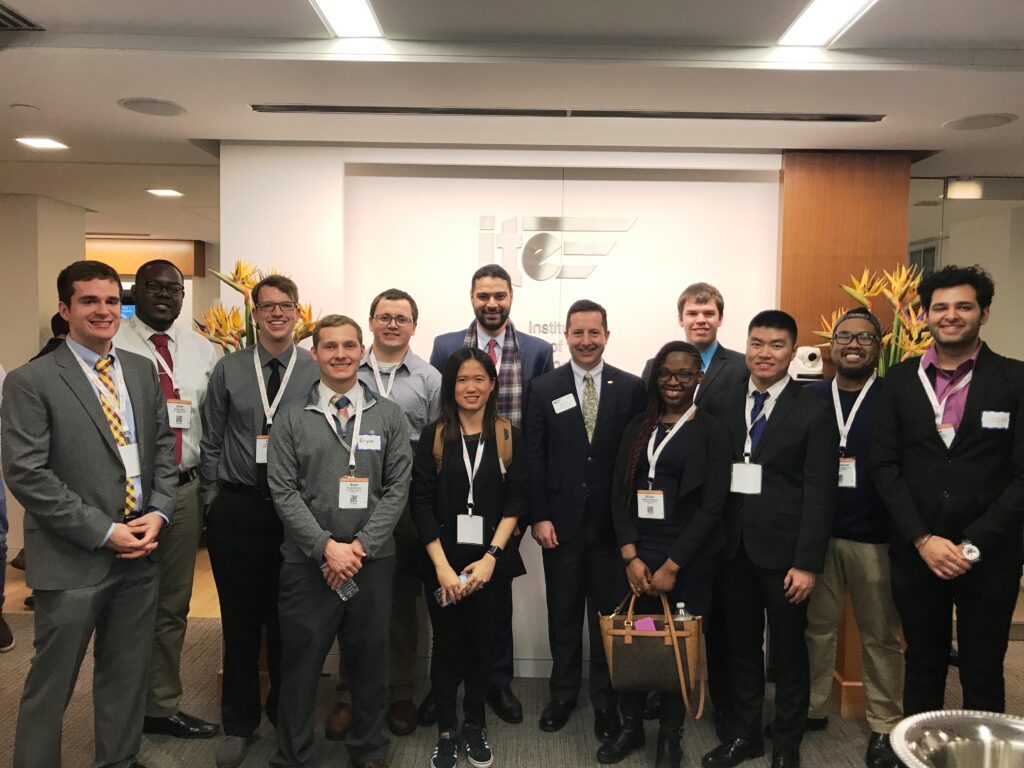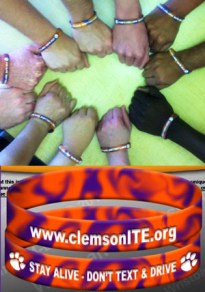Members on Her Mind: Colleen Agan, Institute of Transportation Engineers

Like the transportation professionals she helps, Colleen Agan spends much of her working time thinking about how she can improve member operations for the Institute of Transportation Engineers (ITE). The past few years have constituted a challenging puzzle for Agan, associate executive director and senior director for membership strategies and operations, and her colleagues. They have restructured and refreshed many facets of ITE including an update of their governance documents and ITE’s Constitution, creating new strategic plans and rebalancing member districts. Diversity and inclusion have taken a leading role in their work as ITE strives to welcome more potential members of different engineering backgrounds and career stages, particularly students. The coronavirus pandemic has presented further challenges in the form of supporting members, many of whom work for public agencies, through budget freezes and furloughs.
Agan isn’t fazed, however. A theme of gratefulness for the experiences she’s had and the lessons learned from the association community, plus optimism fueled by the empathy she sees among ITE’s membership permeated our exchange. For all of the challenges Agan has faced in her membership work, “I’m grateful to have a hand in developing the solutions,” she said.
Association Adviser: How did you get into association management?
Colleen Agan: I was fortunate to begin working for the National Association of Chain Drug Stores (NACDS) shortly after I graduated from college. It was such a great experience for me. NACDS is a top-notch trade association that helped me understand the powerful role of associations in networking, professional development, and a specialty of NACDS, introducing people to new products and ideas. I was a part of the Meetings Department while there, and I learned from an exceptional group of colleagues. NACDS opened my eyes to how associations work and the powerful way associations can bring people together.
From NACDS, I moved on to other associations and invested in my career as an association professional. At every position that I’ve moved to, I’ve taken on more responsibility and strived to provide value for our members. I’m a problem solver and people person at heart, which I think works very well in association management. I’ve been very fortunate to be able to connect with so many people and bring solutions to our members.
AA: What do you do as associate executive director and senior director for membership strategies and operations at ITE?
 CA: First and foremost, I spend a lot of time thinking about and helping our members. We are an association of 16,000 members, and we have a very traditional structure with 11 districts, about 80 sections, and then a handful of chapters. In addition to the professional side, we also have about 150 student chapters. Chapter management is a very important part of what I actively take part in and oversee. ITE International is successful when our volunteer leaders have the tools they need to help them bring members together locally to engage in actively improving their communities. Supporting and encouraging our volunteers and elected leadership is critical.
CA: First and foremost, I spend a lot of time thinking about and helping our members. We are an association of 16,000 members, and we have a very traditional structure with 11 districts, about 80 sections, and then a handful of chapters. In addition to the professional side, we also have about 150 student chapters. Chapter management is a very important part of what I actively take part in and oversee. ITE International is successful when our volunteer leaders have the tools they need to help them bring members together locally to engage in actively improving their communities. Supporting and encouraging our volunteers and elected leadership is critical.
I also spend my time thinking about our operations: how we currently do things, where we can improve, and what opportunities are out there that we should be capitalizing on. I’m fortunate in my current position because I feel supported by my supervisor, colleagues, and our board as a whole. We aren’t afraid to take on challenging work that improves the ITE experience for our members. For the past few years, we’ve done a lot of restructuring of our districts and sections so that we all operate more efficiently and consistently under the banner of One ITE. This includes everything from changes to ITE’s Constitution to allow for a more professionally diverse membership, adopting new strategic plans, rebalancing our districts and updating all of our governance documents. We’ve taken on some very challenging problems, and I’m grateful to have a hand in developing the solutions.
AA: ITE serves many audiences: transportation engineers, planners, consultants, public agencies, educators, technologists, students and researchers. How do you balance the information and professional development needs of these diverse audiences? How do you decide which to prioritize at any given time?
CA: We listen to our members and rely on our Technical and Employer Councils. Our Technical Councils cover many areas of the practice, and the leadership is an important connection to the technical needs of the member. They inform and help us develop professional development and products that provide value to our members. This is critical because they not only have their finger on the pulse of the day-to-day needs of practitioners and what products may need updates, but they also lead us to where we are going in the future and developing trends.
Our priorities may shift over time and circumstance. For example, with the recent shutdowns due to COVID-19, there was a focus in our industry to close streets to vehicles and open them up to pedestrians and bicyclists, and allow for social distancing and restaurants to expand into streets as well. ITE was able to provide a forum for cities to share their experiences in how they updated their transportation system to accommodate more pedestrians and fewer vehicles in a socially distanced atmosphere.
AA: How do you or other leaders in ITE communicate your core values to members?
CA: The short answer is that we are all on the same page and deliver a consistent message. ITE’s mission and core values are developed by our International Board. ITE’s staff and leadership use these guiding principles to help us in the development of our strategic plan and how we set goals and strategies to achieve those goals. ITE’s leadership carries this message through our districts and sections while ITE communicates this to all of the membership. We are focused on our goals and the strategies we need to reach them, and we use our mission and core principles as the framework for how we act and move forward.
AA: ITE hosts several competitions: the Micromobility Sandbox Design Challenge and the Traffic Bowl Competition. What are the purposes of these competitions? How do they benefit members?
CA: Competitions are an additional opportunity to be inclusive, especially for our student and younger members. The Traffic Bowl Competition, a volunteer-led effort, is a Jeopardy style game that has allowed close to 100 student chapters to form teams and compete with one another for the grand championship. It’s helped students network with both other students and professionals.

The Micromobility Sandbox Design Challenge was a new competition for ITE this year, and we wanted to give students and younger members a way to show off their skills and provide solutions for a real world problem. With cooperation from the City of Las Vegas, we provided teams a real two-block streetscape where they could design real solutions to accommodate micromobility. We wanted this to be a creative outlet and give them chances to problem solve. We were blown away at the entries we received and hope to have a future competition on another topic next year.

AA: With so many resources available to transportation professionals online or through other communities, what makes membership in ITE worth the time and money? In other words, what is ITE doing right?
CA: We have excellent brand recognition in the industry because we provide critical technical knowledge and opportunities for our members to network and share information with one another. Our members care about safety and helping their communities. They rely on ITE and each other to understand the best practices of their industry and implement those solutions. ITE’s members make ITE special.
AA: On the flip side of the previous question, what are one or two things you would like to improve about ITE’s membership offering, and why?

CA: ITE offers a mentoring program in an online format through our e-Community, and I would like to find a way to encourage more of our local leadership to either implement mentoring programs on their own or use the online format to support mentoring at the local level. In addition, I’d like to find a way to better support our student chapter leadership, not only through recognizing them more widely, but also providing an additional leadership training benefit to them.
AA: How is the pandemic changing the way ITE plans to support its members in the long-term?
CA: There’s a lot that we are looking at and have already done. We host “Drop-Ins” for our members to have half-hour informal discussions about key topics on a regular basis. These are “share sessions” that have allowed our members to connect with one another on topics of their choice. We’re looking at how we deliver publications so that people can continue to have access to critical information even though they may not be near a print publication they had previously purchased. We’ve doubled down on our professional development offerings and are helping to support and produce virtual meetings for our districts and sections. We hosted a virtual annual meeting that allowed us to reach a bigger audience than we would typically reach in an in-person format. We will continue to look for ways for our members to access the people, ideas and resources they need to be the best leaders in their profession.
AA: In terms of your job, what keeps you up at night?
CA: I’m worried about 2021: our members and the economy. We have a lot of members that are employed by public agencies in cities that we know are and will be experiencing negative financial impacts. Some public agencies are in a spending freeze. We know some of our members have either been laid off or furloughed. But it’s not all doom and gloom. In the past six months, I’ve seen our members show that they are resilient leaders, and they’ve been responding to the needs of their communities with empathy, in the face of a pandemic and while dealing with long-standing issues of social justice and equity. I feel like both our members and ITE have been up to the challenges of 2020, and there are many reasons to be optimistic about 2021.

